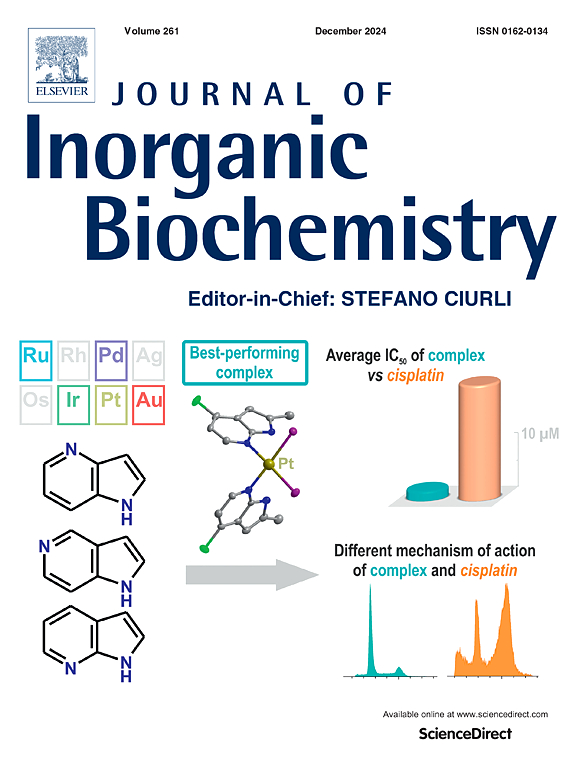卷绕线圈作为无机化学家工具箱中内含物的配体。磁共振成像造影剂设计的进展。
IF 3.2
2区 化学
Q2 BIOCHEMISTRY & MOLECULAR BIOLOGY
引用次数: 0
摘要
配体是合成无机化学中必不可少的工具,可以对金属离子的性质进行微调以优化其性能。从小分子到大分子蛋白质,配体在结构和功能上有很大的不同。从头开始设计的卷曲线圈作为这些极端之间的独特桥梁,提供对金属协调的精确控制。在这里,我们探讨了螺旋形配体在MRI造影剂设计中的应用,利用其多功能性系统地调节钆的配位化学和水合状态——钆是大多数临床MRI造影剂中使用的金属。与现有的临床药物相比,这种新型的钆基药物表现出优越的性能,突出了卷曲线圈配体的潜力。此外,当与铜配合时,这些配体形成复合物,挑战了铜不适合用于MRI造影剂的传统观念。这些发现建立了线圈配体作为推进造影剂设计的强大平台。本文章由计算机程序翻译,如有差异,请以英文原文为准。

Coiled coils as ligands for inclusion in the inorganic chemist's toolbox – For advances in MRI contrast agent design
Ligands are essential tools in synthetic inorganic chemistry, enabling the fine-tuning of metal ion properties to optimize performance. Spanning from small molecules to macromolecular proteins, ligands vary widely in structure and function. De novo designed coiled coils serve as a unique bridge between these extremes, offering precise control over metal coordination. Here, we explore the application of coiled coil ligands in MRI contrast agent design, leveraging their versatility to systematically modulate the coordination chemistry and hydration state of gadolinium - the metal used in most clinical MRI contrast agents. This novel class of gadolinium-based agents demonstrates superior performance compared to existing clinical agents, highlighting the potential of coiled coil ligands. Furthermore, when coordinated to copper, these ligands form complexes that challenge the conventional notion that copper is unsuitable for MRI contrast agents. These findings establish coiled coil ligands as a powerful platform for advancing contrast agent design.
求助全文
通过发布文献求助,成功后即可免费获取论文全文。
去求助
来源期刊

Journal of Inorganic Biochemistry
生物-生化与分子生物学
CiteScore
7.00
自引率
10.30%
发文量
336
审稿时长
41 days
期刊介绍:
The Journal of Inorganic Biochemistry is an established international forum for research in all aspects of Biological Inorganic Chemistry. Original papers of a high scientific level are published in the form of Articles (full length papers), Short Communications, Focused Reviews and Bioinorganic Methods. Topics include: the chemistry, structure and function of metalloenzymes; the interaction of inorganic ions and molecules with proteins and nucleic acids; the synthesis and properties of coordination complexes of biological interest including both structural and functional model systems; the function of metal- containing systems in the regulation of gene expression; the role of metals in medicine; the application of spectroscopic methods to determine the structure of metallobiomolecules; the preparation and characterization of metal-based biomaterials; and related systems. The emphasis of the Journal is on the structure and mechanism of action of metallobiomolecules.
 求助内容:
求助内容: 应助结果提醒方式:
应助结果提醒方式:


